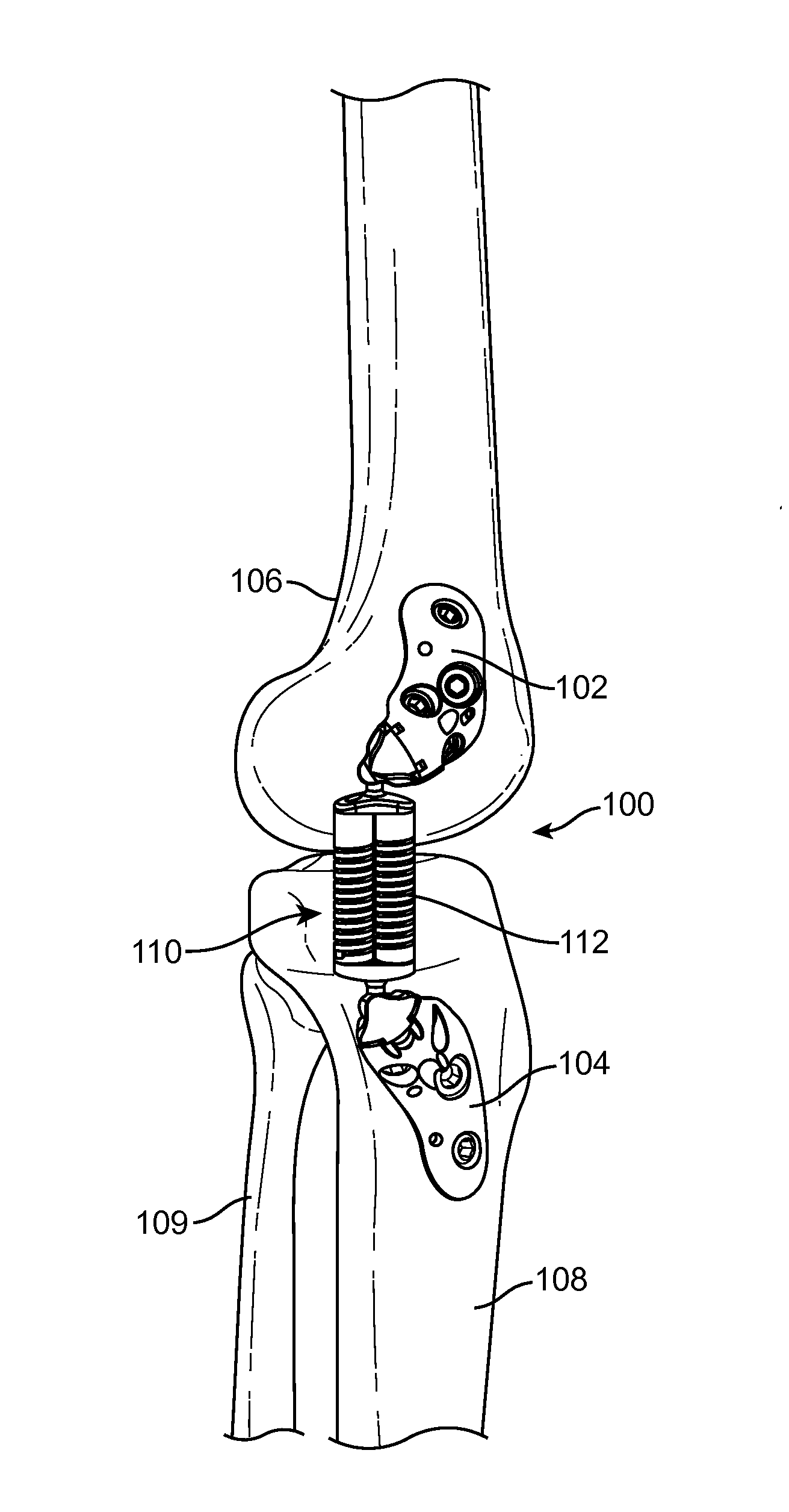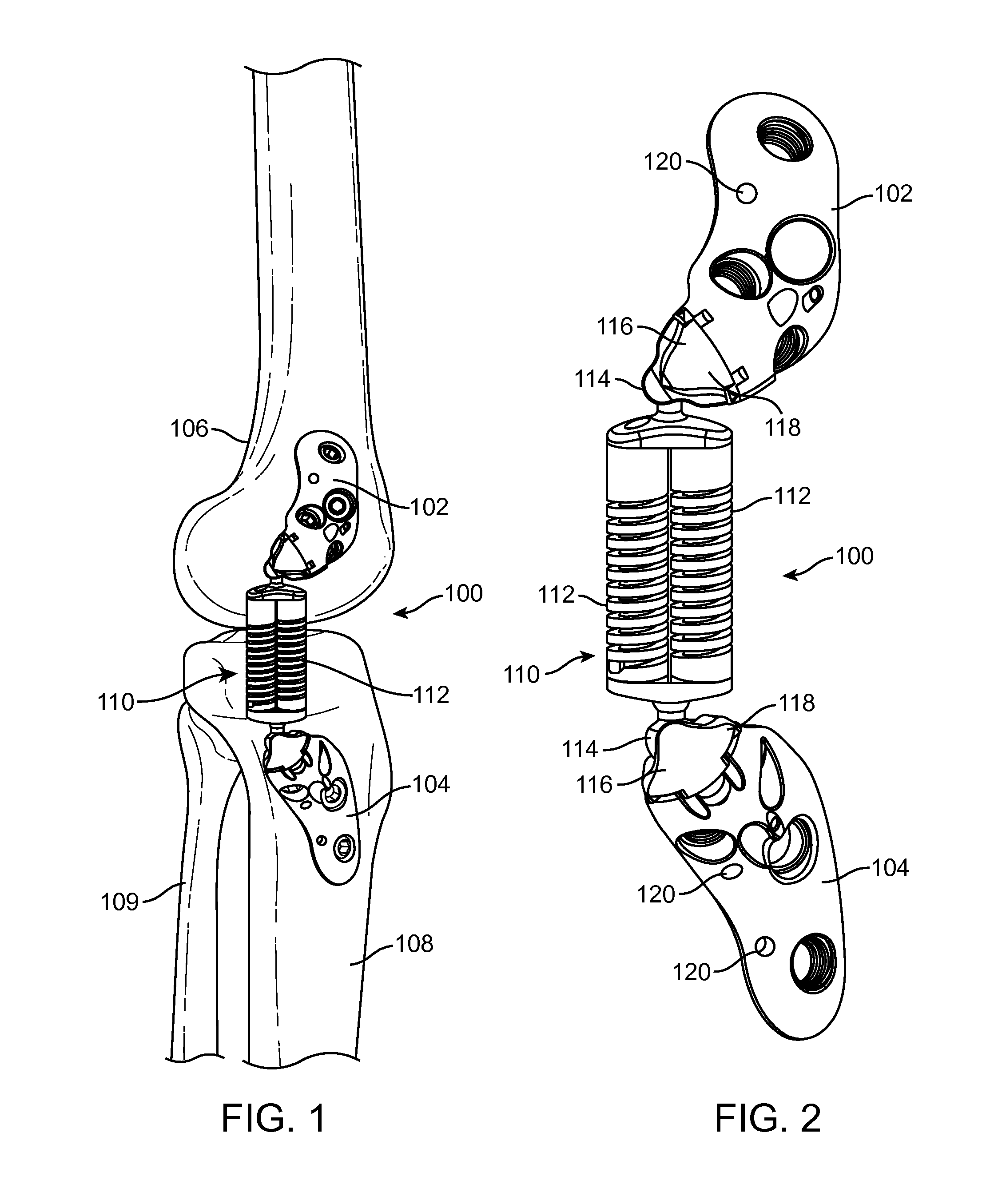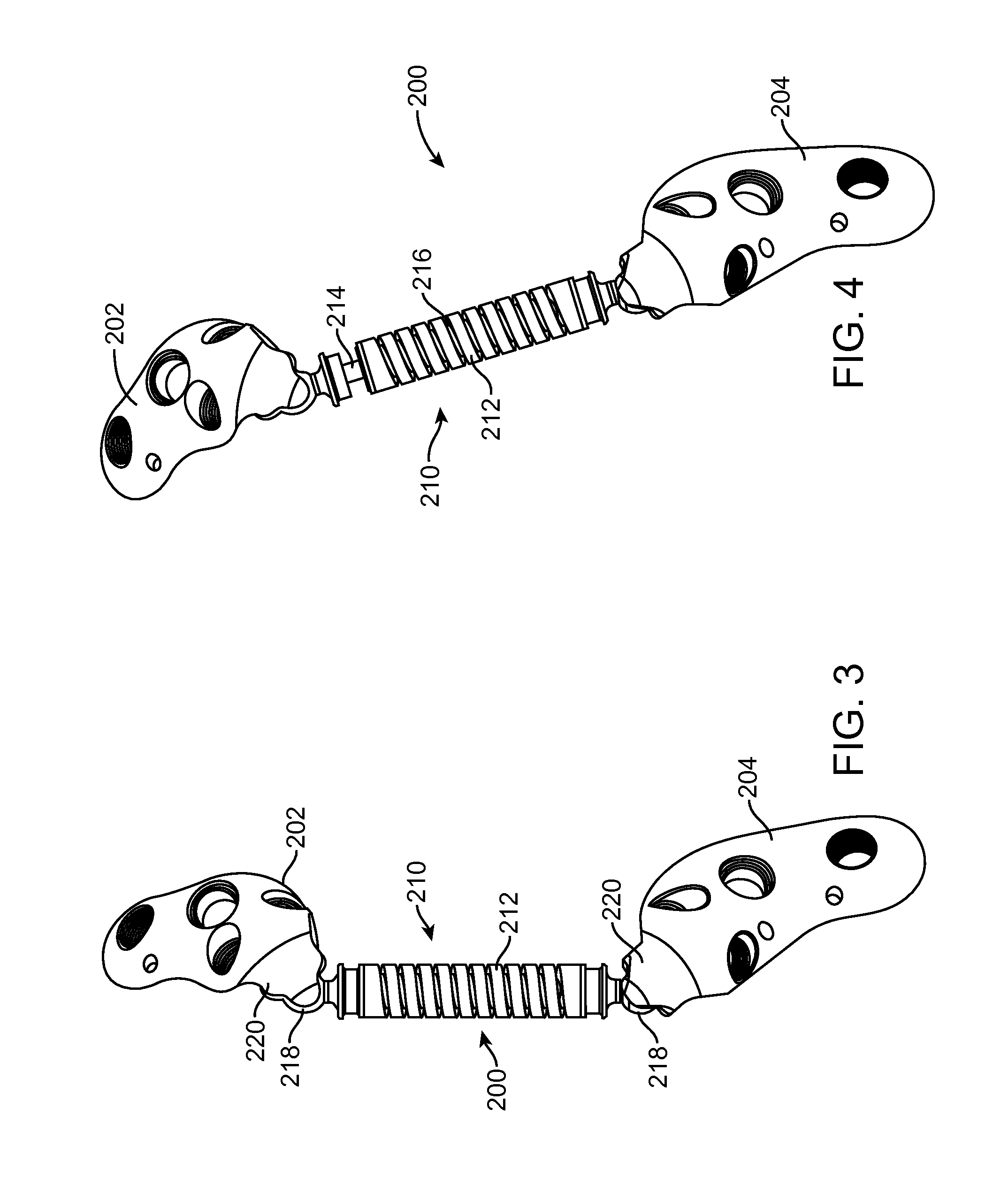Methods and devices for joint load control during healing of joint tissue
a joint tissue and load control technology, applied in the field of orthopaedic surgery, can solve the problems of one or more joints failing or becoming further damaged, requiring substantial recovery periods, and requiring one or more areas of the joint to fail or become further damaged, so as to reduce the load, reduce the transmission of load, and reduce the bearing
- Summary
- Abstract
- Description
- Claims
- Application Information
AI Technical Summary
Benefits of technology
Problems solved by technology
Method used
Image
Examples
Embodiment Construction
[0023]Referring now to the drawings, which are provided by way of example and not limitation, the disclosed embodiments are directed towards apparatuses and methods for treating a joint such as, but not limited to, the knee joint. However, these embodiments may also be used in treating other body joints, and to alleviate pain associated with the function of diseased or misaligned members forming a body joint without limiting the range of motion of the joint.
[0024]Articular cartilage is composed basically of matrix material, water and chondrocytes. It is thought that the chondrocytes are primarily responsible for cartilage formation and vitality. Chondrocytes are sensitive to loads (both impact and cyclic) and overloading leads to cell death. Many surgical treatments for repair of joints rely on chondrocyte growth or generation, however, overloading counteracts this chondrocyte growth. Implantable joint unloading, load reducing, or load control devices can be used with a surgical rep...
PUM
 Login to View More
Login to View More Abstract
Description
Claims
Application Information
 Login to View More
Login to View More - R&D
- Intellectual Property
- Life Sciences
- Materials
- Tech Scout
- Unparalleled Data Quality
- Higher Quality Content
- 60% Fewer Hallucinations
Browse by: Latest US Patents, China's latest patents, Technical Efficacy Thesaurus, Application Domain, Technology Topic, Popular Technical Reports.
© 2025 PatSnap. All rights reserved.Legal|Privacy policy|Modern Slavery Act Transparency Statement|Sitemap|About US| Contact US: help@patsnap.com



